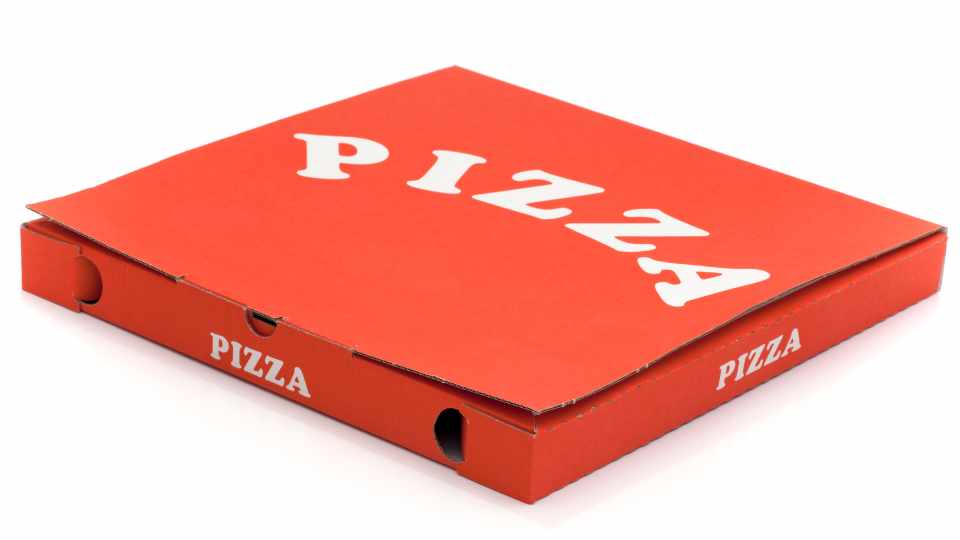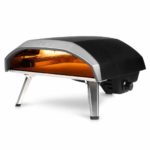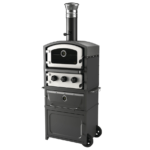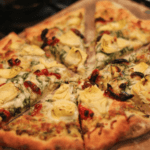Can You Put Pizza Boxes In The Oven (Things to Know)
Have you ever been in a hurry to heat up a pizza slice but didn’t have an oven-safe dish handy? You may have wondered if it’s possible to use your cardboard pizza box instead.
While this sounds like a quick and easy solution, putting a cardboard pizza box in the oven can present some risks. This blog post will cover those risks and provide tips on the best way to safely warm up or reheat your pizza without using the original box.
The Risks Of Putting Pizza Boxes In The Oven

Putting a pizza box in the oven can pose several risks, including fire hazards, the potential release of harmful chemicals into food at higher temperatures, and exceeding safe temperature limits for cardboard and inks.
Potential Fire Hazard
Putting a pizza box in the oven is unsafe as it can be a potential fire hazard. Cardboard and paper-based materials have the risk of catching fire at around 400 degrees, making it risky to put them in the oven even with low temperatures set.
There is also a possible risk when foreign objects such as metals and plastics come in contact with heat sources like an oven, increasing the chances of ignition. Covering cardboard with foil before putting it into an oven traps the heat inside causing further risks.
Harmful Chemical Release Into Food
Many pizza boxes are made with hazardous substances such as diisobutyl phthalate (DIBP) and perfluorinated compounds (PFCs), both of which pose serious risks to human health.
DIBP, for example, is a known agent which can lead to birth defects and cancer. Similarly, PFCs have been linked to kidney and liver damage in laboratory animals.
Fortunately, there are ways that you can minimize your exposure to these harmful substances when reheating pizza. One way is by removing the box altogether: If you already have an oven-safe tray or dish at home then this should always be used instead of a cardboard container.
Aluminium foil or parchment paper may also work just as well without risking any contamination from nasty chemicals found in packaging materials; simply place each slice onto its own sheet before sticking it into the hot oven! Other options like using a microwave or even a simple toaster oven might provide safer methods too if available in your kitchen.
Safe Temperature Limits For Cardboard And Inks
It is not safe to put a pizza box in the oven. Cardboard and inks used on the boxes may catch fire if they reach around 200°C or 400°F, jeopardizing kitchen appliances and increasing the risk of food contamination.
Moreover, putting a pizza inside the cardboard box can lead to uneven heating which will result in undercooked or overcooked pizzas. Whenever reheating pizzas outside their original packaging, it’s important that one remains aware of how high their oven temperature goes since going beyond 200°Celcius or 400°Fahrenheit will ignite your cardboard container.
If temperatures reach more than 220°C or 427°F then there is an even greater chance for fires as well as hazardous chemical leakage into food due to ink melting off from cardboard containers.
Safe And Effective Ways To Reheat Pizza Without Using Cardboard Boxes In The Oven
Using Oven-Safe Dishes Or Pans
Oven-safe dishes and pans are the safest and most effective way to reheat pizza without putting cardboard boxes in the oven. Oven-safe cookware is made of materials, such as glass, metal, and ceramics, that can resist extremely high temperatures which is necessary for baking anything in an oven.
Pans with constructed lids or covers heated on the stovetop are another great option when heating food up safely. Not only do these options keep sauces from boiling over onto your oven floors while cooking them but they help lock in moisture so that you won’t have dry pizza crust either! The benefit of using an oven-safe dish or pan instead of a cardboard pizza box is twofold; firstly it eliminates any chance that chemical contamination will occur due to overheating paper or cardboard thus making it safer to consume pizzas after being kept inside them.
Using Aluminum Foil Or Parchment Paper
Aluminium foil and parchment paper are both effective methods to safely reheat pizza in the oven, as they serve as an ideal protective barrier against direct heat that could potentially cause cardboard boxes to ignite.
Both materials have high-temperature resistance and will not melt or combust when heated. Aluminium foil is lightweight, convenient and provides a good seal over any reheating dish but can be tricky to use with large pizzas.
Paper parchment on the other hand has higher tear resistance making it better suited for irregularly shaped foods such as pizzas. It also absorbs moisture while heating which helps keep food crispier than aluminium foil would; however, it should not be reused due to hygiene concerns.
Using A Toaster Oven Or Microwave
When it comes to reheating pizza, the best and most effective method is a toaster oven. With its ability to reach higher temperatures than conventional ovens, this appliance can help create a perfectly heated pizza with crispy crusts and evenly heated toppings.
Toaster ovens also allow you to heat just one or two slices at a time, making them perfect for individuals looking for a quick snack. When heating up frozen pies, be sure to thaw out the pizza first before baking it in your toaster oven.
On the other hand, microwaves are not ideal for pizzas as they don’t reach high enough temperatures for proper reheating and tend to cause soggy crusts with unevenly heated toppings.
Proper Disposal Of Pizza Boxes
Should be properly disposed of after use, as they cannot easily be recycled due to their thin but sturdy material.
Recycling Vs. Trash Disposal
Recycling or proper disposal of pizza boxes is important for reducing waste and preserving the environment. Greasy, wet, and contaminated pizza boxes should not be placed in curbside recycling bins as these can contaminate other recyclables if not properly taken care of.
Pizza boxes should be broken down into flat pieces before disposing to ensure that they don’t create a blockage in the bin or pile up too much at one time. Cheese on a lid makes it unrecyclable due to the grease and food residue, so trimming any cheese off before crushing helps make it easier for waste management processors.
For boxes that are non-greasy but still have residual food matter, disposing of them through composting may provide an eco-friendly solution.
Breaking Down Boxes For Easy Storage And Transport
One of the most efficient and eco-friendly ways to store or transport pizza boxes is by breaking them down. Breaking down cardboard boxes saves space, eliminates clutter, and simplifies waste management for both pizza businesses and households.
It’s important to remove any food residue from the box before attempting to break it down into smaller pieces as greasy materials can be hazardous when combined with other recyclables.
To break a Pizza Box, begin by flattening out one side so all three sides are equal in length. Then turn the box over so that one end is facing up – this allows you access to cut along either side of the folded crease at the top of the back panel using scissors or an X-Acto knife.
Next, you should fold each flap inward until they meet in the centre then discard any excess material on either end of your newly formed rectangle shape (including any extra plastic tabs).
Conclusion
Reheating pizza without a cardboard box in the oven is the safest and most effective way to ensure that your food stays hot and delicious. Cardboard boxes can pose serious risks if placed too close to high heat, such as in an oven; they can catch fire or release harmful chemicals into the food.
To minimize these risks, remove the pizza from its original box before placing it inside an oven-safe dish or pan lined with aluminium foil or parchment paper. Alternatively, use a microwave or toaster oven for reheating purposes instead of an ordinary stovetop oven.






